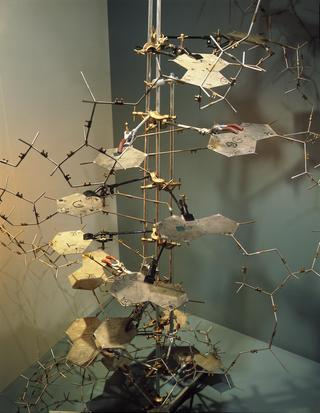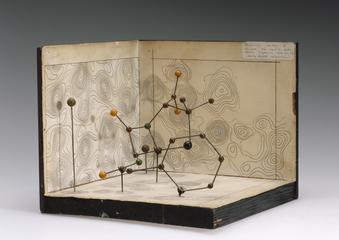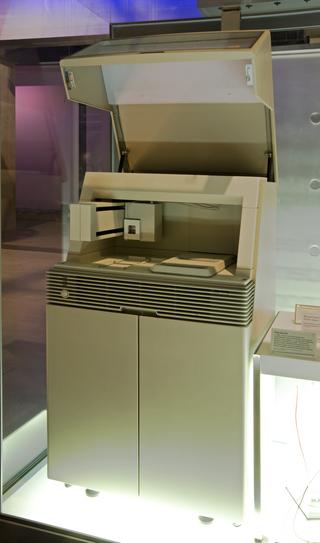
Model of a influenza virus, Canberra, Australia, 1994




Model of influenza virus built for Professor W G Laver to the structure of the influenza virus (magnified 5 million times) and its rapid mutation of the influenza virus and shown at the Royal Society in June 1994
Magnified five million times to a size of 710 mm in diameter, this model shows a particle of the influenza virus. The yellow rod shapes represent haemagglutin, used by the virus to gain entry into cells in the body. The four-pronged mushroom represents an enzyme, neuraminidase, used by the virus when it has shifted and changed in shape to spread to other cells. The changeable nature of the shape of the virus means flu is difficult to prevent using a vaccine. The model was made for William Graeme Laver, a virologist working on a treatment for influenza, to exhibit at the Royal Society in June 1994.
Details
- Category:
- Biochemistry
- Object Number:
- 1994-1033
- Measurements:
-
overall: 1025 mm 650 mm,
- type:
- model
- credit:
- Laver, W.G.




